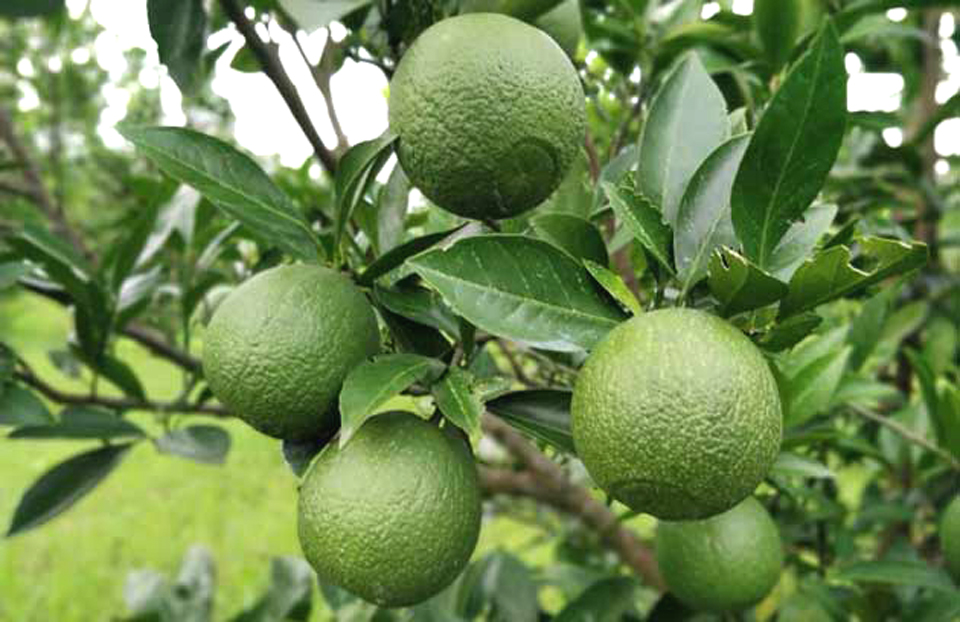
RAJSHAHI, Oct 30, 2022 (BSS) - Three youths- Mukta Ali, Tofazzal Hossain and Sultan Ahmed- have jointly developed a malta orchard through planting 300 saplings on three bigha of land at Arani Khorda Baosha area under Bagha upazila in Rajshahi in 2017.
After nursing the field for around two years they sold fruit worth around Taka 67,000 in 2019.They are very much hopeful about selling malta of Taka four lakh this year. They are now successful in their venture.
Aminul Islam along with four of his co-villagers has established an orchard on 45 bigha of land commercially on partnership approach at Bottoly area under Godagari ipazila in Rajshahi.
Currently, they are doing their business successfully, said Islam, adding malta is being sold at Taka 100 to 120 per kilogram in local markets.
He said the consumers get fresh Malta as these are sold directly from the orchard to the market. Local Malta is delicious and tastes better than the imported varieties.
Islam said imported malta varieties are being sold at Taka 220 to 240 per kilogram, while the local variety at Taka 90 to 120 at present. Many of the consumers are seen going for the option to purchase the local variety as its price is significantly low compared to the imported one.
Upazila Agriculture Officer Sharmin Sultana said there is a water crisis at Godagari as it is in the Barind region. So, the farmers in this region are getting interested in farming Malta as it takes less water to get good yield with a little care.
Malta is being cultivated on around 110 bighas of land in this upazila, said the agricultural officer.
Malta farming has gained popularity in the region including its vast Barind tract because many of the grassroots growers have become delighted through the cash crop farming commercially.
The farmers are seen expanding acreage of the citrus fruit in many of the dried lands consisting of Rajshahi, Chapainawabganj and Naogaon districts gradually after the best uses of modern technologies and other existing natural resources.
Obaidullah Shah, a farmer of Tentulia village in Porsha Upazila of Naogaon, has established a Malta orchard through transplanting 1,560 saplings on seven bighas of land in 2018 first. He harvested fruit valued at around Taka 2.5 lakh the following year and attained around Taka six lakh last year.
He's expecting one and half mounds of fruit from each of the trees in the current year. "I have established one more orchard on six bigha of land this year," said Obaidullah. He gets suggestions from the local agriculture extension and research offices regularly.
Shah said commercial cultivation of the citrus fruits has begun in many areas making the farmers happy and enthusiastic side by side with vibrating the local economic activities.
The farmers who cultivate malta are now more interested in cultivating the fruit instead of many other fruits and vegetables. This year, this fruit is expected to be produced well.
Cultivation of the fruit will bring a revolution in the local economy as hundreds of people from ultra-poor families have attained self-reliance by cultivating malta.
Dr Shafiqul Islam, Principal Scientific Officer of Fruit Research Station, said Barimalta1 is more drought tolerant and tasty than any other exotic variety.
Cultivation of malta, a high valued citrus fruit, has been gaining popularity as the growers are reaping lucrative outputs from the farming in the Barind region.
DASCOH Foundation, a non-government organization, on behalf of its 'Integrated Water Resource Management (IWRM) Project, is extending technical and financial support to the farmers for boosting the malta production in the region as part of its effort to promote the less-water consuming crops in the drought-prone area.
Coordinator of the project, Jahangir Alam Khan said they provided financial support worth Taka 31.17 lakh for installation of 17 submersible pumps with seven solar panels for ensuring irrigation facilities to around 200 bigha of malta farming fields in drip method.